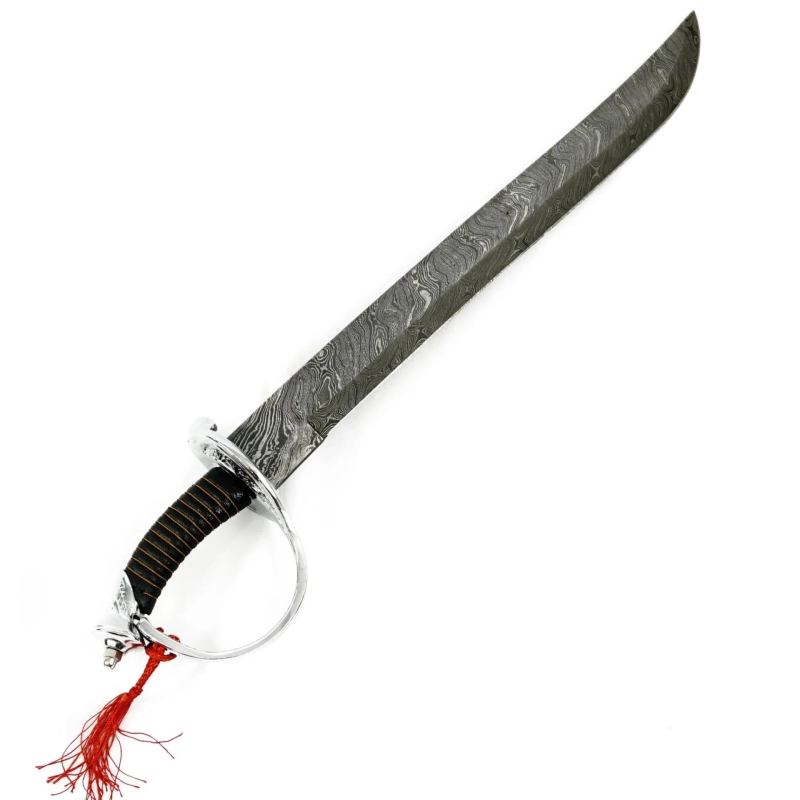A steel sword is not merely a weapon—something more than a symbol of honor, craftsmanship, and legacy for generations. Smelted for medieval knights or built for collectors today, every blade has a story to share. For history enthusiasts, martial artists, cosplayers, or collectors who value finely crafted steel swords, an expertly curated collection bridges the past and the present. At Battling Blades, every sword for sale is built to express real craftsmanship as well as meet modern standards of quality. In this article, we delve into the ultimate collection of steel swords, ranging from legendary medieval swords to hi-tech, contemporary masterpieces, made to amaze collectors and enthusiasts.
Why Steel Swords?
Steel has always been the preferred material for swords that perform well. Steel is resistant, sharp, flexible, and elastic. Carbon steel, stainless steel, and Damascus steel are some of the finest materials to employ in swords.
A steel sword can be impact-resistant, maintain an edge for a longer period, and be rust-free if they are properly forged and tempered. Collectors and practitioners adore steel swords for their durability, lifespan, and historical accuracy, like those found at Battling Blades.
Medieval Wonders: War Relics and Chivalry
The Middle Ages were the times of swordsmen. Blacksmiths then honed methods of crafting swords that gave rise to legendary weapons that are still admired.
The Broadsword
The broadsword is the most famous medieval weapon in Europe. Its double-edged, broad blade made it suitable for heavy knocks. It was used by knights in combat and ceremonies. A well-crafted steel sword, such as those provided by Battling Blades, boasts detailed hilts and perfectly balanced weight, thus a collector's favorite.
The Longsword
Held in both hands, the longsword was employed for reach, accuracy, and force. The weapon was adopted between the 13th and the 15th century and was a staple of knight-to-knight fighting. Hobbyists now use longswords in historical fencing, stage combat, and reenactments. Modern pieces still have the long, tapering blade and crossguard that made them classics.
The Falchion
Combining the strength of an axe with the agility of a sword, the falchion had a single-edged curved blade perfect for slicing. Its distinctive shape rendered it a favorite among foot soldiers. Enthusiasts adore the falchion for its quirky design and historical significance.
Renaissance and Beyond: Steel Evolution
As the evolution of warfare took place, so did it for the swords. New steel sword designs focused on speed, agility, and finesse rather than mere force.
The Rapier
Elegant, slender, and lethal—rapiers defined the Renaissance. Popular among the nobility, they were ideal for dueling and defending oneself. Their slender blades allowed thrusting attacks to be swift and precise. Modern-day rapiers in steel are celebrated for their light build and artistic guards.
The Cutlass
Mostly linked with pirates and sea battles, the cutlass was a curved short sword well suited for close-range fighting. Its strong construction made it reliable in ships. Collectors value the cutlass because it has its background from the sea and a streamlined look.
Contemporary Masterpieces: Tradition Meets Innovation
Although modern warfare does not depend on swords anymore, sword-making is still alive. Today's craftsmen mix old skills with new techniques in order to produce collector's pieces, training weapons, and ceremonial steel swords.
The Tactical Sword
Contemporary tactical swords take inspiration from both historical and military concepts. They tend to have full-tang construction, stainless or high-carbon steel, and ergonomic handles. They're designed to work and are often used in survival training or martial arts practice.
Damascus Steel Swords
The Damascus steel sword is renowned for its wavy patterns, created by layering various kinds of steel. They are tough, flexible, and extremely sharp. They're not just visually stunning, but they're also great swords, perfect for display. Battling Blades has a hand-forged Damascus sword for sale that combines function and beauty.
What to Look for When Adding a Sword to Your Collection
When choosing a sword, consider the following:
● Purpose: Is the steel sword for display, training, or combat reenactment?
● Material: High-carbon steel provides edge retention, and stainless steel resists rust. Damascus offers both strength and beauty.
● Balance and Weight: A well-balanced sword will be easier to manage and will feel more real.
● Craftsmanship: Hand-forged swords generally have higher quality, durability, and detail.
Battling Blades offers an extensive range of swords for sale, along with their proper and detailed description to help collectors choose the best sword. Whether it's a medieval replica or a custom modern blade, you can find everything to per your needs.
Pride Display: Sword Care and Storage
Having a steel sword comes with the responsibility of care. The following are easy tips to preserve swords in great shape:
● Leave blades dry and clean to avoid rust.
● Oil (such as mineral oil) should be used to sustain metal.
● Store swords in a dry location, preferably in a sheath or on a display stand.
● Do not touch the blade with your bare hands, as skin oils can ruin the finish.
Battling Blades also sells sword stands and maintenance tools to assist collectors in maintaining the value and appearance of their swords.



